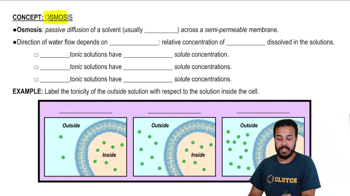Multiple Choice
The concentration of solutes in a red blood cell is about 2%, but red blood cells contain almost no sucrose or urea. Sucrose cannot pass through the membrane, but water and urea can. Osmosis would cause red blood cells to shrink the most when immersed in which of the following solutions?
3859
views
2
rank






